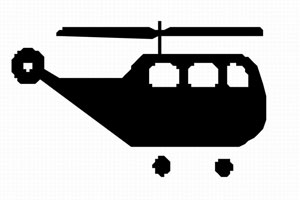China forges ahead with airspace opening-up
China will carry out reforms next year to further open up low-altitude airspace to private airplanes with communication and surveillance facilities already built to ensure flight safety.

Too many planes but too few air routes describes the problem facing the country's civil aviation industry. Flights among cities are ordered to fly in a limited zone that is just kilometers wide.

The cargo volume of the whole industry in China is expected to grow to 63.2 billion tons in 2012 and the passenger volume will top 320 million.

The total distance of China's air routes, which stands at 164,500 kilometers over 490 air routes, has been growing at 2.6 percent for the past five years, the 21st Century Business Herald reported.
 One of the two categories of civil aviation, general aviation refers to all flights other than military and scheduled airline passenger and cargo flights. Most of the world's air traffic falls into this category.
One of the two categories of civil aviation, general aviation refers to all flights other than military and scheduled airline passenger and cargo flights. Most of the world's air traffic falls into this category.
 Military control of airspace below 1,000 meters has for decades stifled the general aviation market of China, slowing down development of the civil industry, experts explained.
Military control of airspace below 1,000 meters has for decades stifled the general aviation market of China, slowing down development of the civil industry, experts explained.
 China's low-altitude airspace is controlled by the Air Force and the Civil Aviation Administration of China (CAAC). Private flights currently need to go through time-consuming and complicated procedures to fly in low-altitude airspace, which has hampered demand for private jets.
China's low-altitude airspace is controlled by the Air Force and the Civil Aviation Administration of China (CAAC). Private flights currently need to go through time-consuming and complicated procedures to fly in low-altitude airspace, which has hampered demand for private jets.
◆In November 2010, the State Council and the Central Military Commission jointly decided to open up part of the country's low-altitude airspace for the first time.
◆Since January 2012, airspace below 1,000 meters in northeast, central and south China, as well as above six pilot cities, has been open to general aviation flights.
◆In August 2012, the military agreed to "actively release" more temporary routes for airlines, a change from the previous procedure, which stipulated that the CAAC must file an application to obtain approval from the military in extreme weather.
◆In October 2012, another plan was implemented to allow civil flights to adopt varying altitudes, which was loosened from a restriction of 8,400 meters and above and allowed the number of flights to double on the same route.
◆Communication and surveilance facilities aimed to ensure low-altitude flight safety have been constructed in major districts of Changchun and Guangzhou and on the Hainan Island.
◆Four general aviation flight service stations have also been put to use in Shenyang, Shenzhen, Hainan and Zhuhai to provide maintenance service.
◆New regulations on airspace planning and operation as well as applications for general aviation flights are expected to be issued in 2012.
◆Specialist civil pilot training classes have also taken off in China: Civil Aviation Flight University of China, China's only full-time regular institution of higher education for civil pilots, began offering its first private helicopter license class at Xinjin Flight College in March, with 13 students graduating in July, 2012.
 Opening the airspace is expected to promote China's general aviation industry, including the purchase and use of private planes. There is potential for market growth in this area but it has been impeded by the country's restrictions on airspace use.
Opening the airspace is expected to promote China's general aviation industry, including the purchase and use of private planes. There is potential for market growth in this area but it has been impeded by the country's restrictions on airspace use.
 The opening of the low-altitude airspace is likely to strengthen the development of private airplanes, part of the general aviation.
The opening of the low-altitude airspace is likely to strengthen the development of private airplanes, part of the general aviation.
 No room at the airport for general aviation jets
No room at the airport for general aviation jets
 China needs more infrastructure to develop its general aviation industry
China needs more infrastructure to develop its general aviation industry
 General aviation may overheat: expert
General aviation may overheat: expert

The opening of the low-altitude area would stimulate growth. The government should establish a sound system to pave a path for the growth of general aviation and lift restrictions on its development.
------Dai Xu, an air force strategist

The current aviation measures are both harsh and unhelpful to social development.
------Yang Yu, director of the emergency management office of the Yanliang National Aviation Hi-tech Industrial Base

Restriction on low-altitude airspace is not the only tie to the development of general aviation in China. A private airplane faces lengthy procedures before it could take to the sky.
------Yang Xiaonong, general manager of Changsha Tong Lian Aerospace Technology Co

First you have road, then you have growth. You need the freedom first. Without the freedom, the general aviation will be less practical.
------John J. Sheehan, secretary-general of International Council of Aircraft Owner and Pilot Associations
Low-altitude airspace for private planes now open
General aviation airports to boom in East China
Political advisor calls on developing general aviation with prudence
Dassault Falcon opens China branch

